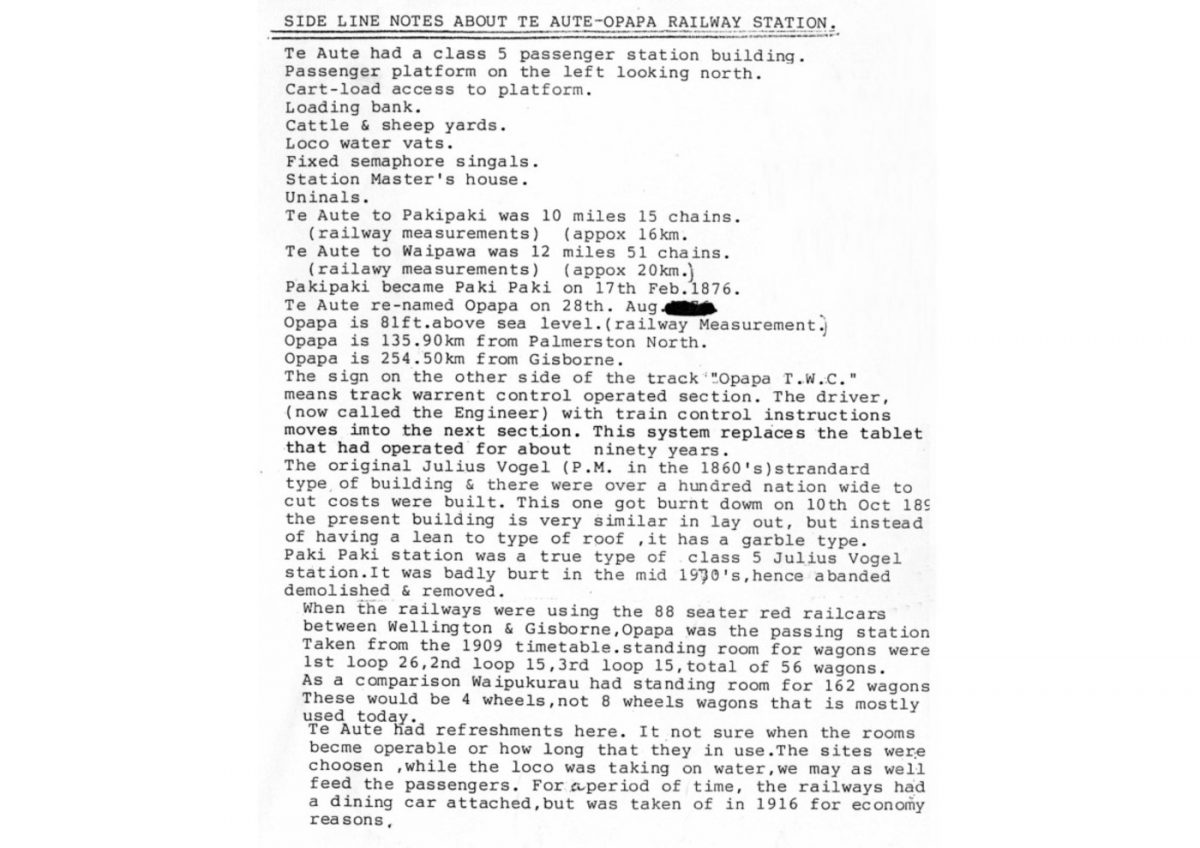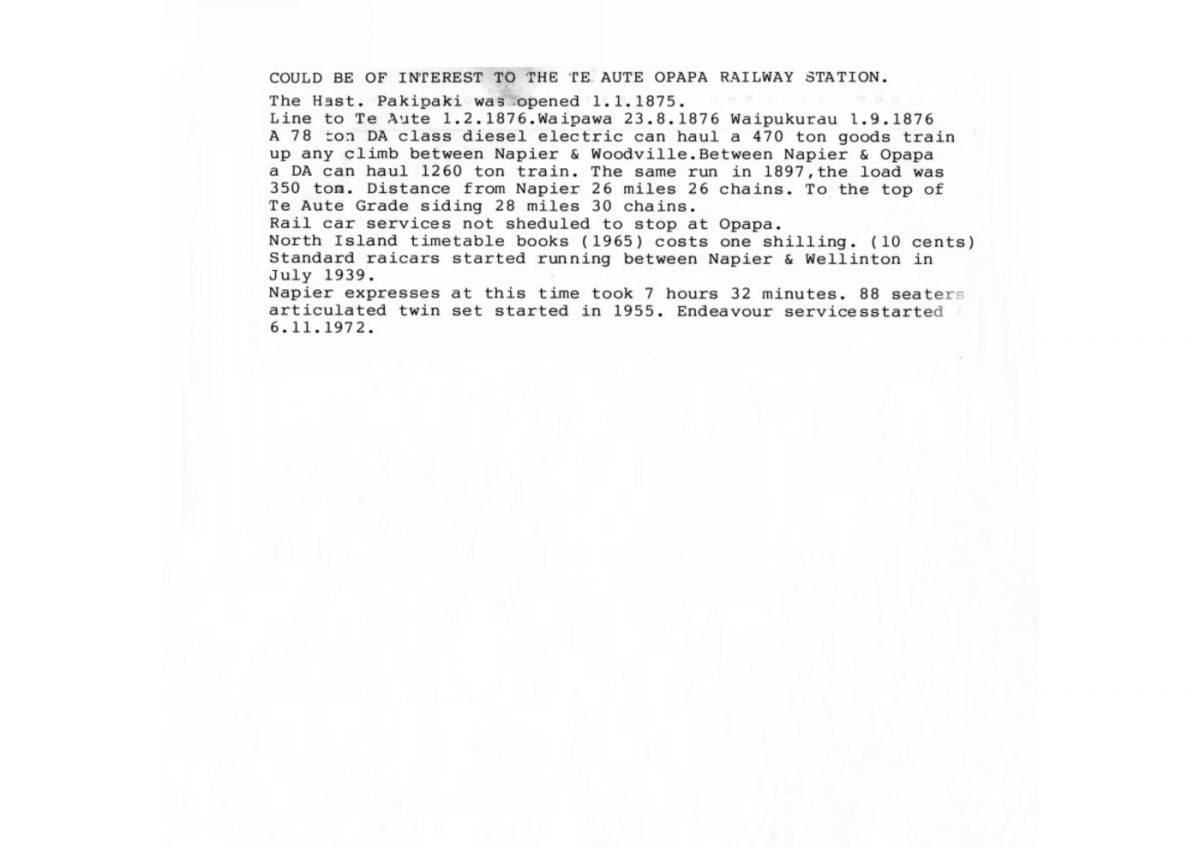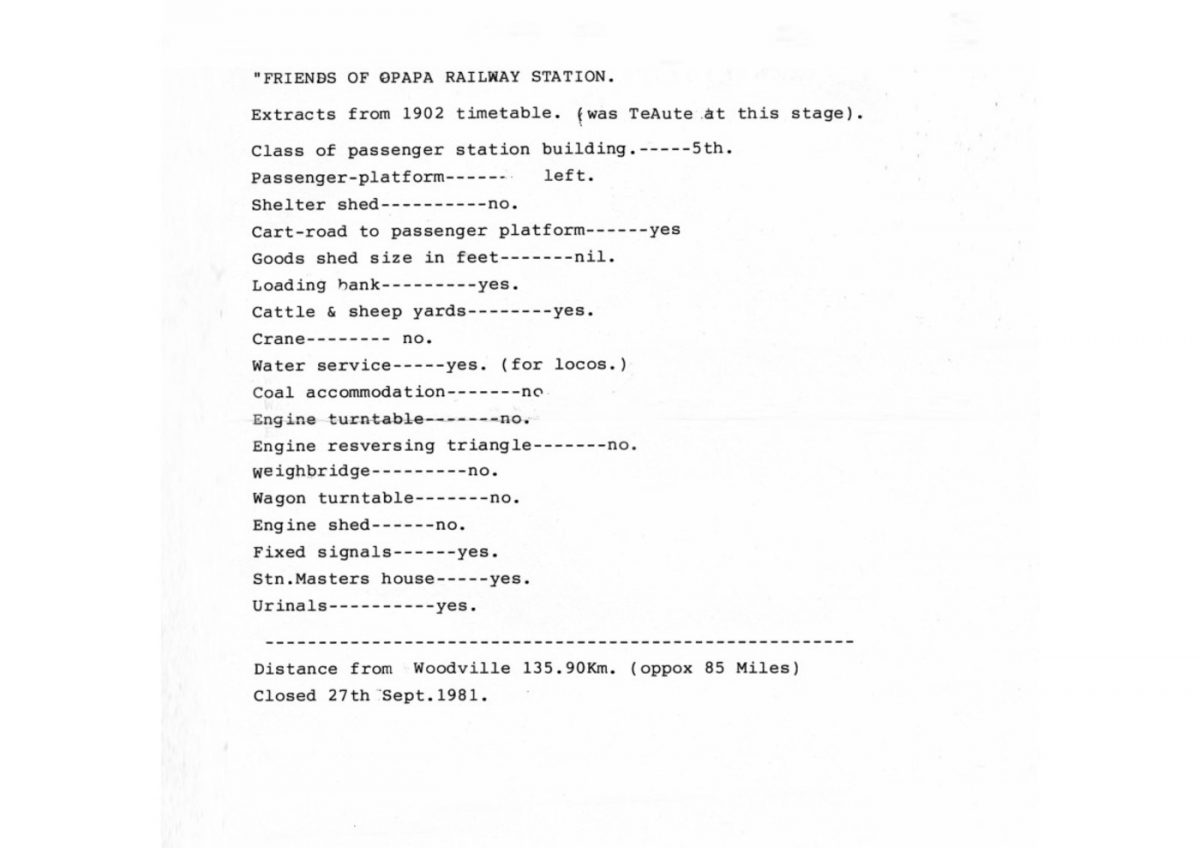SIDE LINE NOTES ABOUT TE AUTE-OPAPA RAILWAY STATION.
Te Aute had a class 5 passenger station building.
Passenger platform on the left looking north.
Cart-load access to platform.
Loading bank.
Cattle & sheep yards.
‘Loco water vats.
Fixed semaphore singals [signals].
Station Master’s house.
Uninals. [Urinals?]
Te Aute to Pakipaki was 10 miles 15 chains.
(railway measurements) (appox [approx] 16km
Te Aute to Waipawa was 12 miles 51 chains.
(railway measurements) appox 20 km.)
Pakipaki became Paki Paki on 17th Feb.1876.
Te Aute re-named Opapa on 28th. Aug.
Opapa is 81ft.above sea level. (railway Measurement.)
Opapa is 135.90km from Palmerston North.
Opapa is 254.50km from Gisborne.
The sign on the other side of the track “Opapa T.W.C.” means track warrent [warrant] control operated section. The driver (now called the Engineer) with train control instructions moves imto [into] the next section. This system replaces the tablet that had operated for about ninety years.
The original Julius Vogel (P.M. in the 1860’s) strandard [standard] type of building & there were over a hundred nation wide to cut costs were built. This one got burnt dowm [down] on 10th Oct 1895 the present building is very similar in lay out, but instead of having a lean to type of roof, it has a garble [gable] type.
Paki Paki station was a true type of class 5 Julius Vogel station. It was badly burnt in the mid 1970’s, hence abanded [abandoned] demolished & removed.
When the railways were using the 88 seater red railcars between Wellington & Gisborne, Opapa was the passing station.
Taken from the 1909 timetable. standing room for wagons were, 1st loop 26, 2nd loop 15, 3rd loop 15, total of 56 wagons. As a comparison Waipukurau had standing room for 162 wagons. These would be 4 wheels, not 8 wheel wagons that is mostly used today.
Te Aute had refreshments here. It [is] not sure when the rooms becme [became] operable or how long that they in use. The sites were choosen [chosen], while the loco was taking on water, we may as well feed the passengers. For a period of time, the railways had a dining car attached, but was taken of [off] in 1916 for economy reasons.














Do you know something about this record?
Please note we cannot verify the accuracy of any information posted by the community.